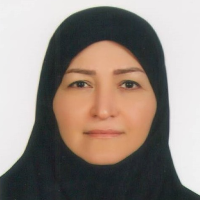Presenting a Conceptual Model of the Components Making the Sense of Privacy in the Mosques
‘Privacy’ in Islamic culture is considered one of the concepts related to the existential dimensions of human beings and one of the most important spiritual needs for self-improvement and a sincere connection with Allah. In this regard, mosques, as places for the Muslims’ collective worship ceremonies, are not only a place for social interaction but also a privacy-focused gathering, they are optimal places for thinking and enjoying some private moments with Allah. Two questions arise that what are the components of creating the privacy in the Architecture of mosques? How do these components result in the creation of this privacy in the mosques? The present study is basic and qualitative research in terms of purpose, which uses both comparative and meta-analysis methods. In this study, while analyzing documentary studies as well as in-depth and open interviews, mosques from Isfahan were selected as a case study. The NVivo software was used to analyze qualitative data. Based upon the conceptual model obtained from the research findings, three types of privacy have been proposed. The first mode is ‘having private moments with oneself’ which is made by the components such as ‘introspection and remembrance’. The second mode is ‘having private moments with Allah’ which is formed via components such as the companionship of light and darkness and the vacuity. Finally, the third mode is ‘the privacy in the public’ which is created due to components such as verbal and non-verbal communication.
Privacy , Architecture , Mosques , Nvivo
-
Research on the Recognition of Pictorial Signs of Historical Gravestones in Bishapur Museum, Kazerun (Islamic Era)
Nadia Ashayeri, *
Journal of Negarineh Islamic Art, -
Exploring the Concept of Solitude as a Common Theme in Rumi's Poetry and Architecture (Elements and Decorations)
Mohammad Ibrahim Mazhary *, , Sahar Borhanifar
Paykareh, -
Physical-Spatial Evolution of Mausoleum-mosque in Great Khorasan
Maryam Zainalian, BEHZAD VASIGH *,
Journal of Greate Khorasan, -
Measuring the components of environmental security improvement in residential complexes based on CPTED approaches; case study: sugarcane industry residential complex in Ahvaz
Mohammadebrahim Mazhary, Mohammadali Kazemzadeh Raef*, Saba Mirdrikvandi
Housing And Rural Environment, -
Explanation of indicators for improving the quality of evaluating learners' abilities in technical and professional higher education With emphasis on skill-oriented and employability
Mahboobe Mohammad Shafi, Mohammadreza Neyestani *, Ebrahim Mirshah Jafari,
New Educational Approaches,




